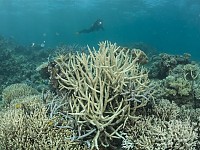This post may contain affiliate links. We may earn money or products from the highlighted keywords or companies or banners mentioned in this post.

A new report by World Wildlife Fund (WWF) reveals that nearly half of all world natural heritage sites are endangered by industrial activities. The sites face risks related to gas and oil exploration, illegal logging, and mining despite the fact that they are often vital sources for the lives of local people and environment.
The world natural heritage sites help the economic and social development of the regions while protecting the environment, according to the study prepared by Dalberg Global Development Advisors. The authors state that 114 mixed and natural sites out of 229 are under the threat of some harmful industrial activity.
WWF pointed out that more than 11 million people rely on world heritage sites in connection to their food, water, shelter and medicine. Thus the industrial activities that affect the sites also impact the lives of these people.
The study, Protecting People through Nature: Natural World Heritage Sites as Drivers of Sustainable Development, highlighted that 90 per cent of world natural heritage sites provide jobs and benefits to people much beyond their boundaries.
The report also revealed that more than 20 per cent of these world natural heritage sites are endangered by multiple harmful industrial activities. The Belize Barrier Reef Reserve System, for example, is at risk from large-scale mangrove clearance, coastal construction, oil exploration, and harmful agricultural practices. These dangers impact 190,000 Belizeans – half of the nation.
In the report, WWF requires private businesses to refrain from activities that endanger the world natural heritage sites. Similarly, they ask all companies and governments to stop financing projects involving harmful industrial activities in the given locations.










